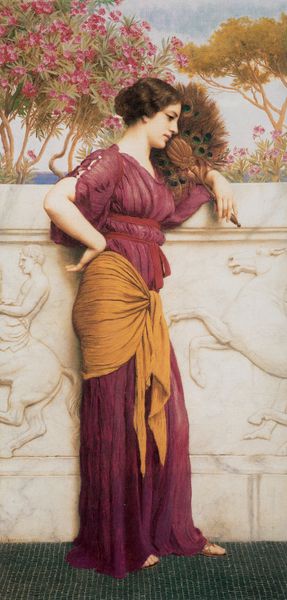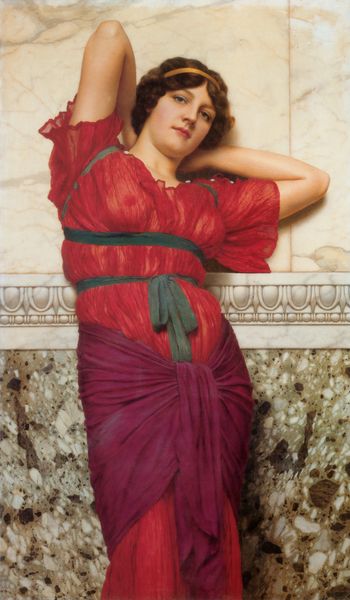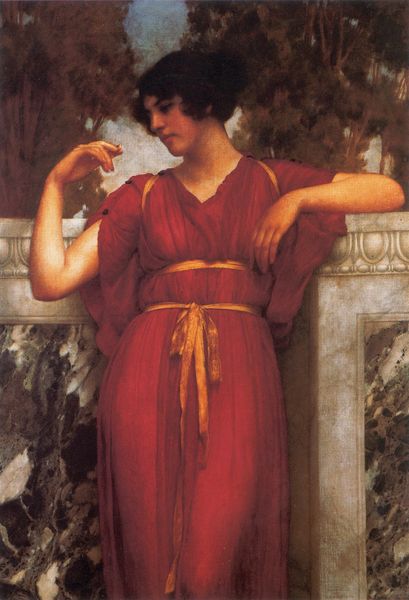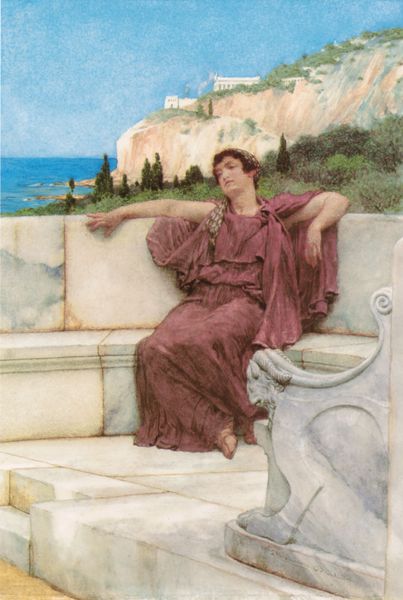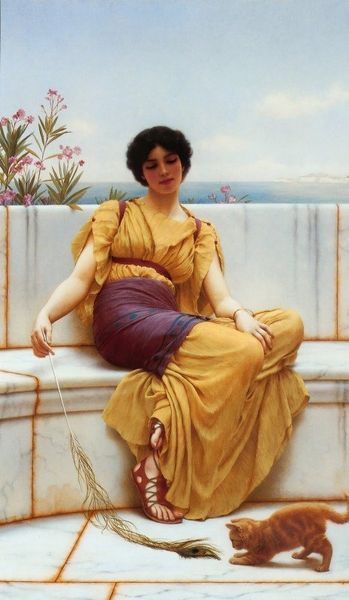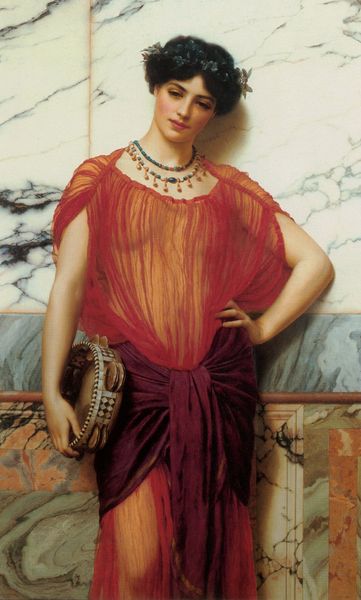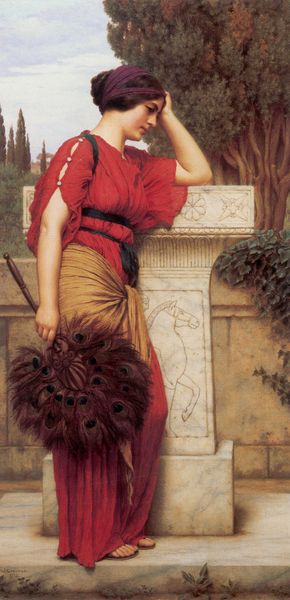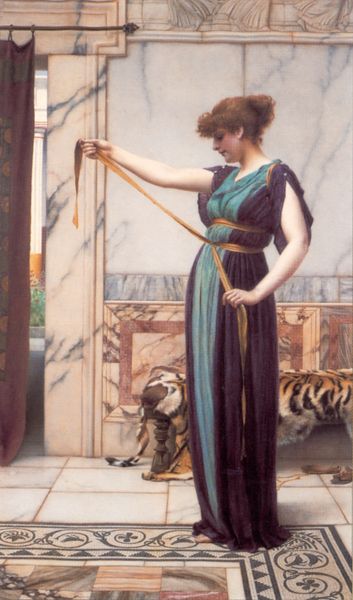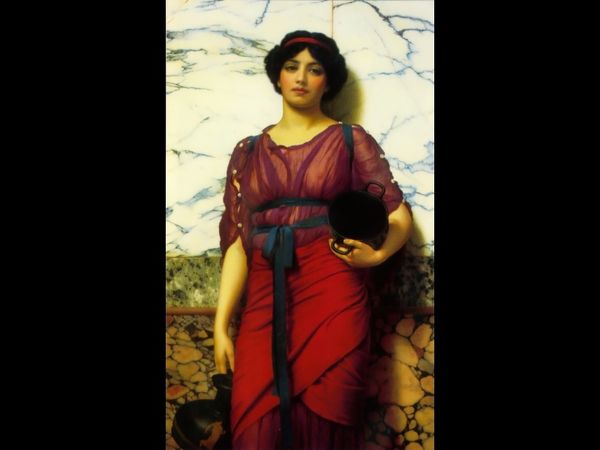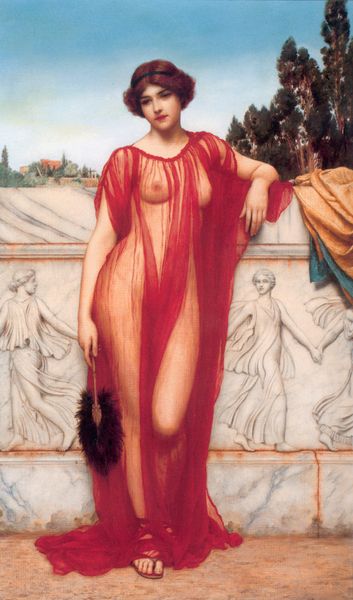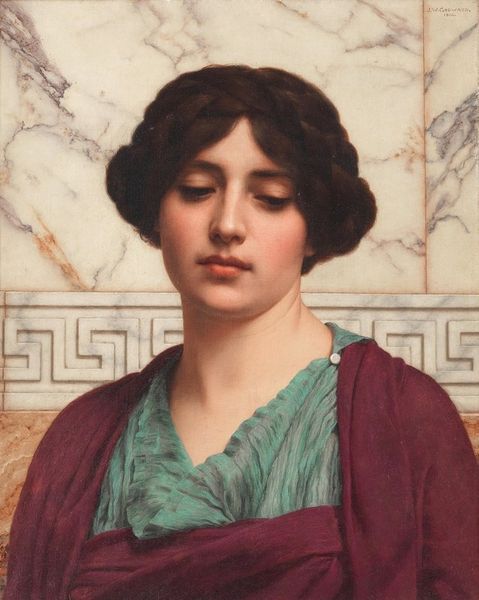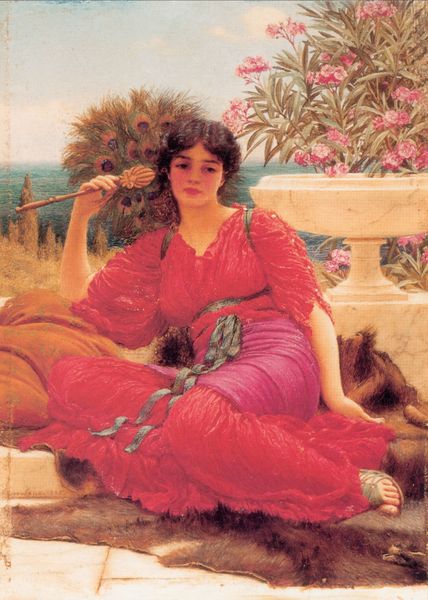
#
portrait
#
street festival
#
festival photography
#
festivity and dance
#
fashion and textile design
#
fashion editorial
#
performing
#
culture event photography
#
crowd photography
#
cultural celebration
#
asian style outfit
#
sitting
#
female-portraits
Dimensions: 99 x 58.5 cm
Copyright: Public domain
Editor: Here we have John William Godward’s “Sweet Dreams” from 1901. The figure's draped clothing and marble setting lend a classical air, but something about the tiger skin seems…out of place. How do you see the materials working in this painting? Curator: The marble and the tiger skin—such contrasting textures! Godward is flaunting his skill, obviously, but it also points to the colonial context. Where do you imagine that tiger skin originated, and what labor secured it for the sitter’s leisure? The drape of her clothing likewise, a skillful rendering but pointing back to the textiles industries dependent upon extraction of raw goods from other lands. Editor: So, you're saying the painting isn't just about beauty, but also about how resources were being extracted and consumed at the time? Curator: Exactly. Think about the production involved in each element, the social dynamics implicit in marble, in fur, in the very pigments used. Godward's technique serves to disguise these power structures, presenting a scene of idealized beauty while obscuring its material roots. Editor: It's interesting to consider the marble not just as a backdrop, but as a resource, shaped and moved by laborers. It completely changes how I see the work. Curator: And consider who is able to purchase this sort of scene and signal taste? Godward feeds a particular demand. How do we see this painting fitting into that larger marketplace? Editor: Now I'm thinking about the viewers too and their role in upholding those power structures. It gives "Sweet Dreams" a whole new layer of meaning! Curator: It shows that "Sweet Dreams" isn't just a representation but is made up of and points to a broader world.
Comments
No comments
Be the first to comment and join the conversation on the ultimate creative platform.
